|
ESA-sponsored Dr Stijn Thoolen, currently spending 12 months at the Concordia research station in Antarctica, presents the next blog in his series recounting tales from his time spent in the harsh environment of the world's southernmost continent. What an amazing experience - do take a look at his previous blogs (Part 1, Part 2, Part 3, Part 4) to follow his great adventure!
Dr Stijn ThoolenMedical Research Doctor, Concordia Research Station, Antarctica
Concordia, April 7, 2020 Sunlight: about 10 hours Windchill temperature: -72°C Mood: just fine 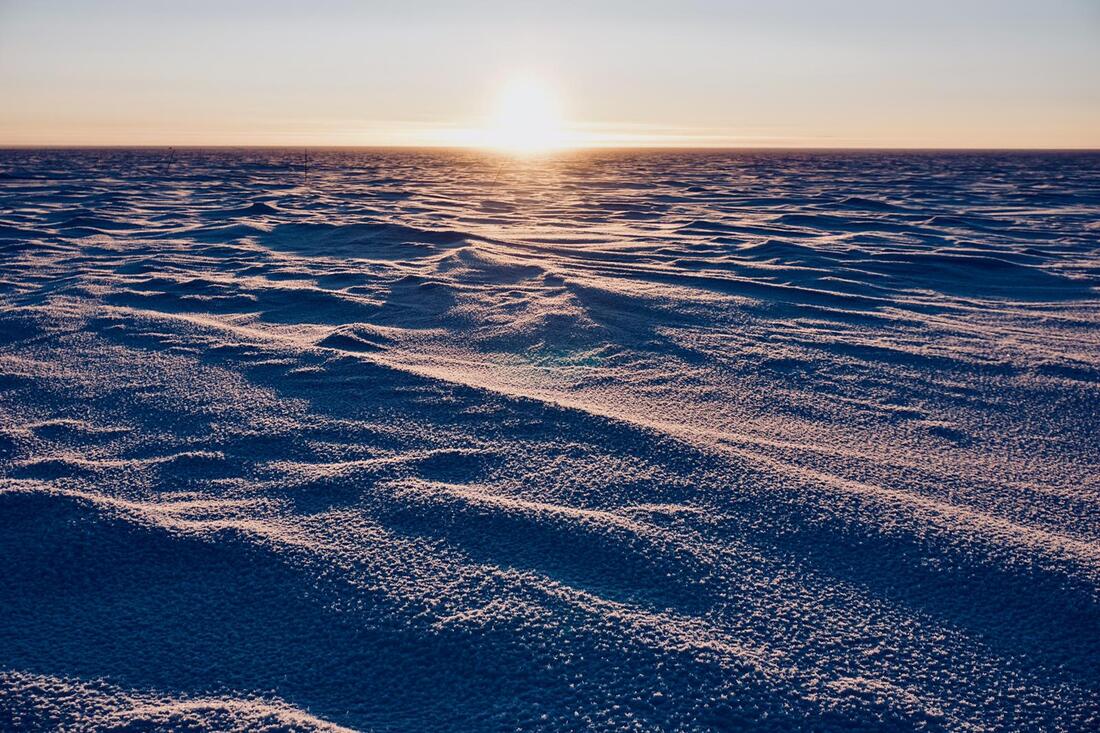 Greetings from paradise! Credits: ESA/IPEV/PNRA–S. Thoolen Greetings from paradise! Credits: ESA/IPEV/PNRA–S. Thoolen
It is quite strange to be here, on the only continent not affected by the corona virus. To me, with everything that is currently going on in the rest of the world, it makes feel even more distant than we already are. Here, life just goes on, and although it has not been easy for some of us either, not being able to share in these experiences or provide support at home to those who could use it, messages are now suggesting that we are suddenly the ones better off!
And I have to admit indeed. Even though we are stuck here for nine months without any possibility for evacuation, with limited resources, a disrupted work/leisure balance, a threatening environment outside, both environmental and social monotony, and a group of relative strangers that come from all sorts of backgrounds (reading this I guess the situation for you may perhaps not be so different), at least we came here by choice…
So let me start with saying that I really hope you are doing well. Being isolated and confined comes with all kinds of stressors, deviations from the normal situation you could say, that ask our body and mind to adapt. Given the sudden disruption that the Corona outbreak has caused to all of you, I imagine that is certainly not easy.
And while our experiences are so different, and even though I feel probably as ignorant as you about how to deal with all those stressors (we have just been left to ourselves two months ago), perhaps this is a good time to share with you some of my own thoughts about isolation at Concordia.
A while ago I came across a story about the 1897-1899 Belgian Antarctic Expedition, which I found quite illustrative for what I have considered to make my winterover a happy one this year. At the time the Antarctic was still mostly unknown territory. The south pole was not yet reached, and the unforgiving environment made many expeditions end in disappointment. Aimed for exploration and for science, this one was no exception. When their ship the Belgica got stuck in the pack ice of the Bellingshausen Sea, the 19-member crew became the first in human history to winterover below the Antarctic circle, and as such you can imagine they were badly prepared to do so. It must have been pretty difficult, I imagine. Expedition doctor Frederick Cook described depression, irritability, headaches and sleeplessness among the crew, and basically provided a first recorded description of the so-called ‘winterover syndrome’.
“The curtain of blackness which has fallen over the outer world of icy desolation has also descended upon the inner world of our souls” – Frederick A. Cook, 1900
The strange and extreme Antarctic environment, just like in space, indeed has a strong capability to upset our system. Symptoms like fatigue, headaches, sleep disturbances, impaired cognition, negative emotions such as depression, anxiety and anger, and interpersonal conflicts have all been observed in polar dwellers. Such symptoms are usually more prevalent during the harsh winter months, when stressors are highest. Hence the ‘winterover syndrome’. For the winterover crew of 1898, Dr. Cook reasoned that what they needed that was the opposite of that harsh winter environment. Apparently with good effect, he prescribed them a diet of milk, fresh meat (poor penguins) and cranberry juice, as well as exercise, warmth and light. Interesting I think, not necessarily his particular ‘baking treatment’ of having the crew sit naked around an open fire, but the way it shows how dependent we are on our environment, and our limitations to adapt. In other words, to facilitate adaptation, we may want to create an environment that is more familiar to us.
For here in Concordia, or perhaps for something as different and unexpected as a Covid-19 lockdown, I like to think the idea is quite similar. I therefore try to maintain a daily rhythm full of activities that mimic a little bit the world we come from. I try to wake up and go to bed at regular times to promote sleep and maintain a functioning biological clock (without sunlight it relies even more on social clues), and while I restrict myself as much as possible from bright computer screens in the evening hours, an artificial daylight is standing by in my office for the darkest months. Elisa, our cook, is making us pretty balanced meals twice a day, and even though I have to admit I eat a lot here (altitude plus cold equals many burned calories), I take vitamin D in addition to make up for the lack of sunlight. About three times a week I visit the gym (it got a little too cold outside) to stimulate myself physically, and if not working, sleeping, eating, or exercising, I try to stimulate my senses by an impact from the magnificent world outside, playing games together, or reading a book. Socially, I try to stay connected with my friends and family at home, and with the crew we regularly have video connections with schools for outreach purposes, and even with each other’s families. We are social beings after all, and we may easily become lonely if we don’t feel part of the group (whichever group that may be…). Finally, to relieve some of the excess amount of stress here, I try to practice meditation each morning, and for the same reasons we have our sauna (yes, sauna) open on Sunday’s. Perhaps it really is a paradise…
Tafadzwa BangaNational Point of Contact, Space Generation Advisory Council - Zimbabwe 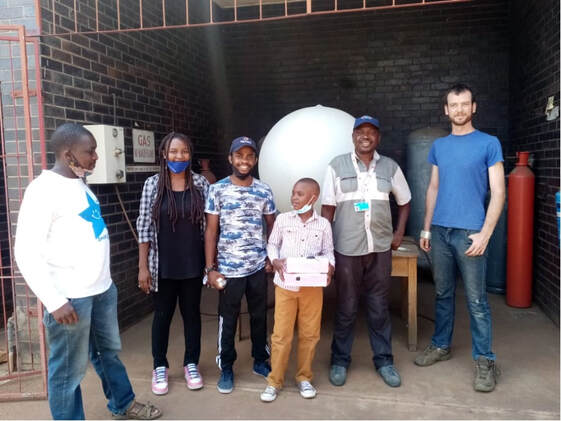 High Altitude Balloon Discover Mission (HABDM) is the first space student-led project that has been done in Zimbabwe. The project was a collaborative engagement project between students from the Students for the Exploration and Development of Space Zimbabwe (SEDS Zimbabwe) and the Meteorological Service Department (MSD) of Zimbabwe. The purpose of this mission was to spearhead space education in Zimbabwe and ensure that students are aware of the opportunities that space has. Our primary goal was to record the flight to the stratosphere and use that footage for educational purpose as well as celebrating the World Space Week. Prior to the launch date we decided that we would send our payload together a radiosonde from the MSD so that we could compare the atmospheric information obtained. 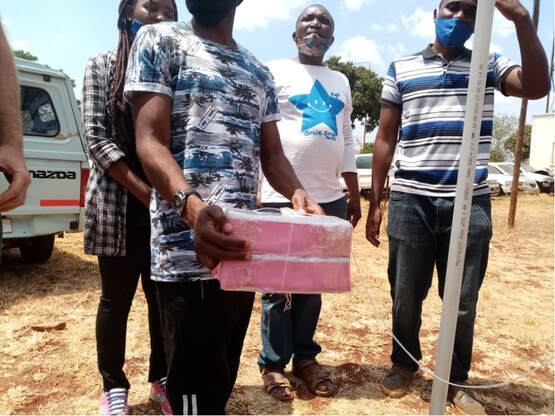 To add to the mission, we covered the capsule pink acknowledging that the month of October is the month for breast cancer awareness. It only took us three days to have all the equipment for the payload. Despite the risks involved and the probability of failing to recover our instruments was high because we did not have enough time to prepare. We had seen videos of well-prepared teams who had done high altitude projects facing some challenges in recovering their payloads when they were using state of the art equipment. So in our case to avoid too much disappointment we had to lower our expectation and accept any outcome. On the 10th of October the whole team met at the MSD offices and without wasting time the balloon was launched. We were graced by the presence of the Deputy Director of MSD Zimbabwe, Mr Mazhara. Unfortunately on the launch the weight of the payload posed a huge challenge. We ended up removing the radiosonde to ensure that the balloon ascended to the stratosphere. Our payload consisted of two cameras, mobile device, usb adapter, power bank and a data logging system. The team consisted of students from University of Zimbabwe and National University of Science and Technology Zimbabwe, with the assistance from Claire a geography teacher at St John’s College in Harare and William, a self-employed space enthusiast. It was through the collaborative effort of the team that we were able to have all the resources that were needed for the launch. The MSD came through for us by providing us with the balloon and hydrogen gas. Vladimir PletserDirector of Space Training Operations, Blue Abyss; European Space Agency (Retd); Chinese Academy of Sciences (Retd); InnovaSpace Advisory Board Member Congratulations to Editor Vladimir Pletser and all the authors who contributed to this interesting open-access book entitled Preparations of Space Experiments, which was published this week. Spend a few minutes watching Vladimir as he summarises the contents of each chapter, written by world-leading researchers who have designed and prepared science experiments on microgravity platforms, including aircraft parabolic flights, in preparation for subsequent spaceflight. Daniel E. Vigo, MD, PhD Independent Researcher: Institute for Biomedical Research (Catholic University of Argentina and National Scientific and Technical Research Council) & InnovaSpace Advisory Board Member Belgrano to MarsThe Antarctic continent is considered to be one of the most realistic analogues found on Earth of the situations of extreme isolation and confinement experienced in space. Since 2014, we have been conducting at the Belgrano II Argentine Antarctic Station the project "Chronobiology of Antarctic Isolation: the use of the Belgrano II Station as a model of biological desynchronization and spatial analogue", also known as “Belgrano to Mars”. The project aims to explore the impact of a year of isolation on different physiological, psychological and social variables. In particular, we are interested in studying how biological rhythms are affected by the lack of natural light during the four months of polar night typical of that latitude. The study of the chronobiological responses to extreme isolation increases our understanding of the physiological mechanisms underlying human biological rhythms, with applications in space exploration or other highly demanding professional settings, as well as in human health. The Belgrano II Antarctic station consists of a series of scientific research facilities located approximately 1,300 km away from the South Pole at 34°S, 77°W. It is the most southerly Argentinian station and one of the three southernmost permanent stations on the planet. The temperature ranges from 5°C to 48°C below zero. One feature of this station is that, due to its latitude, it has four months of continuous sunlight, four months of twilight and four months of polar night. The station crew is composed of around 20 men. To generate a light-dark cycle during the summer, windows with blinds closed are used, in accordance with a normal sleep routine, while using eye covers during the night if necessary. Exposure to ultraviolet light is also stronger and sunglasses for external work are mandatory. Conversely, in the wintertime, the light-dark cycle depends entirely on artificial light. Schedules with well-defined times for meals (breakfast, lunch and dinner) work and rest are paramount in Antarctic stations. “Belgrano to Mars” is a collaborative project in which researchers Camila Tortello and Santiago Plano (UCA-CONICET and UNQ) participate in the analysis and interpretation of the information and Juan Manuel Cuiuli (Joint Antarctic Command) in the scientific coordination between Buenos Aires and Antarctica. Other members of the project are Marta Barbarito (Argentine Antarctic Institute), Diego Golombek and Patricia Agostino (UNQ and CONICET), Agustín Folgueira and Juan Manuel López (Central Military Hospital), and Guido Simonelli (University of Montreal). Field work during isolation is carried out by physicians from the wintering crews at the station and staff members that volunteer for the study. Antarctic scientific activity is coordinated by the National Antarctic Directorate (DNA), which together with the Joint Antarctic Command, provides the logistics of the bases. TelemedicineThis year, we have traveled to Antarctica to supervise the implementation of the Belgrano to Mars project in the field, to test measurement instruments and to train the crew in the use of the equipment and software. The trip demanded six weeks of navigation in the ARA Almirante Iríza icebreaker. In addition, we started working with the European Space Agency (ESA) in the operational test of the Telemedecine Tempus Pro equipment, under the framework of an ESA-CONAE-DNA agreement. The project, led by Dr. Víctor Demaría-Pesce, from ESA's European Astronaut Center, involves conducting operational simulations in a situation of extreme isolation and confinement, which will contribute to the design of a definitive prototype to be used by astronauts and medical teams during future space missions to the Moon and Mars. The equipment will be tested at Belgrano II (Dr. Bruno Cauda and Enf. Luis Almaraz) and Carlini (Dra. Melina D'Angelo and Enf. Gustavo Cruz) stations, through six simulations that will recreate medical scenarios similar to those encountered by astronauts in space. Lessons to be learned from this kind of study We have recently published in the journal Scientific Reports (from the Nature Group) data regarding changes in the sleep-wake cycle during a winter campaign at Belgrano II. We observed that during the polar night the subjects tended to go to bed one hour later and sleep one hour less. A possible explanation is that this is due to the lack of exposure to natural light, since bright light acts as a synchronizer of our biological rhythms. This loss of sleep was somewhat compensated by naps, which were longer during that time of year.
These results show us how biological rhythms can be desynchronized in periods of prolonged confinement, such as the ones we have had to go through during the quarantine periods instituted in different countries. Moreover, it highlights the importance of exposure to natural light in the morning and darkness during the night and maintaining fixed activity and rest routines to avoid the desynchronization of our biological rhythms. Other sleep hygiene measures include the limiting of daytime naps to 30 minutes, regularly exercising (it may be necessary to avoid working out before bedtime), having a light dinner, avoiding stimulants like caffeine and nicotine close to bedtime, and making sure that the sleep environment is dark, silent and with a pleasant temperature. The beneficial effects of having good sleep relate to an increase in alertness during the day, the prevention of anxiety or depression, and the improvement of our general health, which in turn will reduce the chances of becoming ill. Autores: Beatriz Helena Ramos Reis*, Bruno Veiga Fontes de Carvalho*, Prof Jonas Lírio Gurgel**, Prof Flávia Porto**Instituto de Educação Física e Desportos, Universidade do Estado do Rio de Janeiro (UERJ) 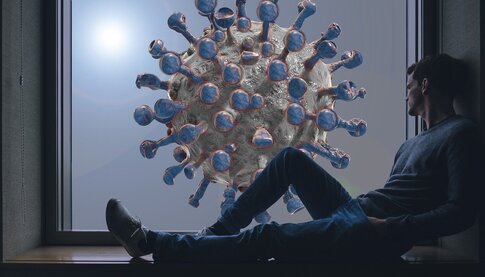 A pandemia de COVID-19 gerou a necessidade de utilizar medidas de distanciamento social para que haja a redução da disseminação do novo coronavírus. Contudo, têm-se percebido prejuízos na saúde física e mental dos indivíduos, porque a mudança brusca na rotina resultou em um novo estilo de vida das pessoas, que passaram a viver em confinamento. Aumento de preocupações, ansiedade, tristeza prolongada e sedentarismo são algumas das consequências ocasionadas ou agravadas pelo isolamento. Como forma de minorar esses efeitos, o exercício físico continua sendo reconhecido como uma estratégia não-medicamentosa eficaz que auxilia na prevenção e no tratamento de doenças físicas, metabólicas e/ou psicológicas. Entretanto, a suspensão e a limitação do uso de estabelecimentos, como academias de ginástica e clubes esportivos, para evitar aglomeração, levaram muitas pessoas a praticar atividades físicas regulares em casa. Nesse contexto, percebeu-se um fenômeno interessante na internet, que foi o aumento da busca por informações online. O Google Trends, por exemplo, é um recurso que expõe os termos mais pesquisados em diferentes lugares do mundo e revela sua popularidade em uma escala de 0 a 100. Nele, foi possível identificar o aumento da busca por informações relacionadas às consequências e necessidades geradas pela pandemia. Nesse contexto, vimos que, no Brasil, as buscas pelo termo “exercício físico em casa”, em Português, antes de março de 2020, teve popularidade baixa (oscilando na escala entre 0% e 25% de procura via Google). Após esse mês, quando se iniciou o distanciamento social no país, a busca pelo termo oscilou, aproximadamente, entre 40% e 100% até o momento atual. Ao analisar o termo “physical exercise at home”, em Inglês, notou-se que, em janeiro de 2020, as buscas estavam entre 0% e 25%. De fevereiro até maio deste ano, as buscas estiveram entre 25% e 100%, diminuindo em junho, momento em que vários países afrouxaram as regras de isolamento. Ao observar esses dados, notamos um aumento considerável na popularidade dos termos durante esse período, demonstrando um maior interesse de internautas sobre o assunto. Essas oscilações parecem ter relação com o fechamento e abertura de comércio e demais atividades no mundo. 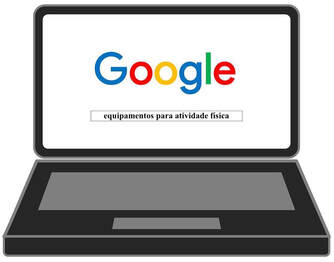 Interessante também mencionar a necessidade de adaptar os exercícios a ser realizados em casa. Dessa forma, percebeu-se que o interesse por equipamentos esportivos para realizar exercícios físicos em casa também aumentou, sendo demonstrado nas buscas no Google. A pesquisa pelo termo “equipamentos para atividade física”, nos dois primeiros meses desse ano, estava próxima a zero em níveis de interesse; já em março, o interesse aumentou bastante, chegando a atingir 100 no mês de abril. Em todo mundo, o termo “equipment for physical activity”, pesquisado na língua inglesa, mostrou pico de interesse (100 na escala) no mês de fevereiro e menor interesse próximo ao início de junho (0 na escala). Como a pandemia ainda não está controlada, inclusive com previsão de novas ondas de contágios e mortes, é bem provável que os hábitos das pessoas mudem, realmente, como forma de adaptação à nova realidade. Apesar da reconhecida resiliência das pessoas, não se pode negar que os prejuízos psicológicos são evidentes e, muitas vezes, é até difícil entender esses sentimentos e lidar com a magnitude que podem atingir. Pensando nisso, repetimos o processo de investigação no Google Trends e verificamos que o termo “depressão na quarentena” não apresentava interesse da população Brasileira entre janeiro e início de março (0 na escala) – esse desinteresse deve-se, provavelmente, ao fato de que ainda não existia o confinamento social no Brasil. Porém, a partir de março, a busca pelo termo cresceu muito, atingindo o pico de pesquisa (100 na escala) no início do mês de maio. Quando pesquisado, em Inglês, o termo “quarentine depression” também não houve interesse pela população mundial entre os meses de janeiro até o início de março. A partir daí, iniciou-se um aumento exponencial pela procura do termo, atingindo seu pico no mês de abril e, após, uma sequente diminuição até o mês de junho. Do espaço ao COVID-19: o que podemos aprender? Astronautas devem saber lidar com o confinamento e, apesar de serem submetidos a diversos tipos de treinamento para cumprir de forma adequada as missões espaciais, efeitos psicológicos provocados pelo confinamento são relatados na literatura. No caso da COVID-19, não houve preparo para essa nova realidade. Estamos todos tentando desenvolver mecanismos para desenvolver resiliência e melhor lidarmos com a pandemia e todos os acontecimentos relacionados à ela. A internet torna-se uma aliada, uma companhia provedora de informações e possibilidades de compras para as pessoas. O desafio agora é lidar com essa quantidade de informações, separando-as em relação à veracidade e à aplicabilidade.
Authors: Beatriz Helena Ramos Reis*, Bruno Veiga Fontes de Carvalho*, Prof Jonas Lírio Gurgel**, Prof Flávia Porto**Institute of Physical Education and Sports, State University of Rio de Janeiro (UERJ) 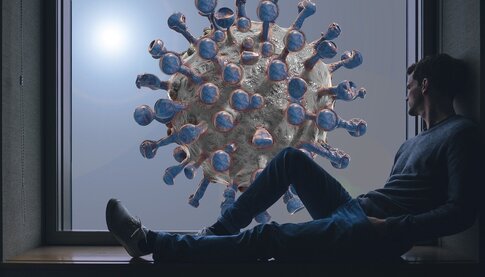 The COVID-19 pandemic has generated the need to employ social distancing measures to reduce the spread of the new coronavirus. However, negative effects on the physical and mental health of individuals have been noted, as the sudden change in routine has resulted in a new lifestyle for people, who are now spending their lives in confinement. Increased worries, anxiety, prolonged sadness and inactivity are some of the consequences caused or aggravated by isolation. Physical exercise continues to be recognised as an effective non-medication strategy that is useful for mitigating these effects, as it helps in the prevention and treatment of physical, metabolic and/or psychological diseases. However, measures taken to suspend and limit the use of establishments, such as gyms and sports clubs, to avoid people gathering together, have led to many people undertaking regular physical activities within the home. In this context, an interesting phenomenon has been seen on the internet, which is an increase in the search for information online. Google Trends, for example, is a resource reporting the most searched terms in different locations of the world and reveals the popularity of these terms on a scale of 0 to 100. It was possible from this to identify an increased search for information related to the consequences of the pandemic and the needs it has generated. It can be seen that in Brazil, prior to March 2020, searches for the term in Portuguese “exercício físico em casa” had low popularity (fluctuating between 0% and 25% on the scale of Google searches). The following month, after the beginning of social distancing within the country, the search for this term has varied between approximately 40% and 100% until the present day. When analysing the same term in English, it was seen that interest in this search varied between 0% and 25% in January 2020, whereas, from February until May of this year, searches rose to between 25% and 100%, before decreasing in June after several countries had relaxed their isolation rules. Analysis of this data evidenced a considerable increase in the popularity of the term during this period, demonstrating a greater interest in the subject by Internet users. These variations seem to be linked to the closing and opening of trade and other activities around the world. 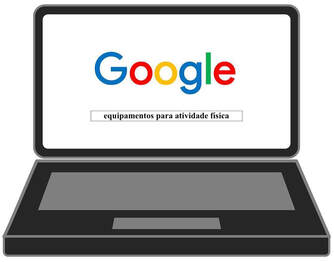 It is also interesting to mention the need to adapt to performing exercise at home. Consequently, it was noticed that interest in the sports equipment needed to practice physical exercise at home also increased, being demonstrated by searches on Google. The search for the term in Portuguese "equipamentos para atividade física" in the first two months of 2020 was close to zero in interest levels; by March interest had increased a lot, reaching 100 in April. From a global perspective, the term “equipment for physical activity”, researched in the English language showed a peak of interest (100 on the scale) in February and less interest by the beginning of June (0 on the scale). As the pandemic is not yet under control, and indeed with the prediction of new waves of contagions and deaths, it is very likely that people's habits will really change as a way of adapting to the new reality. While recognising that people are in general resilient, it cannot be denied that psychological damage is evident, and it is often even difficult to understand and deal with the magnitude of the feelings that may arise. With this in mind, we repeated the research process on Google Trends with the term in Portuguese “depressão na quarentena”, and found little interest from the Brazilian population between January and early March (0 on the scale), probably due to the fact that social confinement did not exist in Brazil at that time. However, from March onwards, the search for the term grew a lot, reaching a peak in searches (100 on the scale) by the beginning of May. Similarly, when researching the term “quarantine depression” in English, there was little interest in the world population between the months of January until early March, with a subsequent exponential increase in searches for the term, reaching a peak in April, followed by a decrease until the month of June. From Space to COVID-19: what can we learn? Astronauts need to know how to deal with confinement and, despite being submitted to various forms of training to adequately meet the challenges of space missions, psychological effects caused by confinement have already been reported in the literature. In the case of COVID-19, there was no preparation for this new reality, leaving us all trying to develop mechanisms to become more resilient to and cope better with the pandemic and all the events related to it. The Internet has become an ally, a service that provides information and shopping possibilities for people. The challenge now is to deal well with this volume of information, dividing it up in terms of what is true and what is applicable.
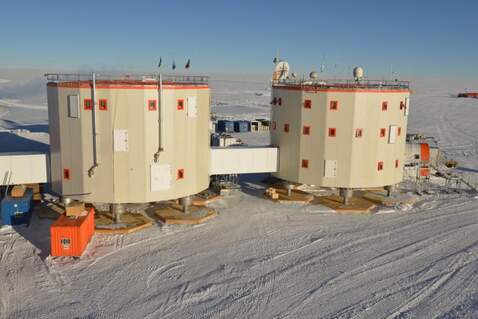 Concordia Research Station, Antarctica Concordia Research Station, Antarctica Ever fancied spending some time in Antarctica? If so, take a look through the writings of Dr Stijn Thoolen, an ESA-sponsored medical doctor spending 12 months at the Concordia research station. His photos will either inspire you to go do it, or remind you of how desolate and EXTREMELY cold it is! Do take a look at Part 1, Part 2, and Part 3 of his blog series, talking about his time at the world's southernmost continent. Dr Stijn ThoolenMedical Research Doctor, Concordia Research Station, Antarctica
It is a beautiful summer day. There is even less wind than usual (with constant summer temperatures, almost always a blue sky and few weather changes, we are mainly concerned with wind), so I am not afraid to go outside in my t-shirt today. The sun reflecting off the snow is attacking me from all directions, and I will most probably burn, but I don’t care. It may be my only chance this year (and I imagine that in a few months I will look back on this day just like you must now look back at those days at the beach, or under the green trees, in the warm sun…). It is busy in front of the station. To the left, an empty rack is being carried away, to the right boxes are sorted, behind me a human chain is carrying them away into a container, and in front of me the green “Merlot” hoists the heaviest stuff. The chaos has something of a busy market on the village square (but then just a little different). Everyone is helping to organize those few 1000 kilos of food brought in by the overland traverse. It had arrived here yesterday, finally, after a day or ten on the ice. Huge logistics. You could say that all that food has arrived just in time, after that monstrous New Year’s Eve dinner two days ago (never seen so much food, not enjoyable anymore). But now that I see with my own eyes what is being stored in those containers and in the station, I am confident we won’t starve this winter. Summer feels like one big party. I have installed myself in the ESA lab by now, as well as within our DC16 crew, who are all still happy to participate in the biomedical research projects (the ESA lab is also a party). Every few days another plane comes in to deliver a new load of guests or equipment, and pick up old ones. Nobody lives here permanently (although some are almost considered part of the furniture after too many summer campaigns). We are all guests, and we are all working towards one common goal: knowledge. There are currently around 70 people here at Concordia, a beautiful collection of the most diverse backgrounds but with that same goal, and all of us equally idiot to think that Antarctica is interesting enough to leave the comfort of home for. Seismologists, carpenters, glaciologists, climatologists, electricians, mechanics, meteorologists, astronomers, plumbers, physicists, physicians, cooks, ICT specialists, a cleaner, and a station leader. It makes for a lively experience and ensures that there is plenty to discover besides writing blog posts. Mary UpritchardCo-Founder, Admin Director, InnovaSpace In 1666, while self-isolating at his manor house in Woolsthorpe, Lincolnshire due to the Great Plague, Sir Isaac Newton proved, using a prism, that white light was actually formed of a composition of different colours. Centuries later, Barry Ressler (Founder, President & CEO of Star Associates Inc. & CEO of ISMC Inc.) was running a series of Monochromatic UV germicidal experiments when, by chance, he also created some fascinating colourful images. He placed a data DVD near a window covered by a shade during the exposures for the experiment he was conducting. On the top of the DVD, Ressler placed a prism and a quartz spacer. When the shade was opened, the angle of the rays of the sun onto the DVD surface reflected through the prism and quartz onto a wall, resulting in the astonishing creation of Image 1. 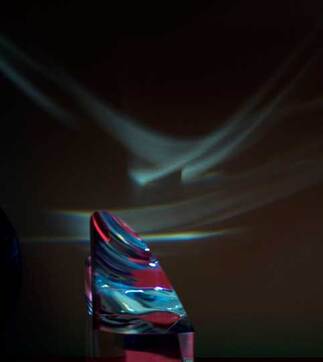 IMAGE 1 - courtesy of Barry Ressler IMAGE 1 - courtesy of Barry Ressler When light moves from one medium to another, some rays reflect or bounce back within an object made of glass or a quartz-like material. This was clearly demonstrated by his experiment, which showed the behaviour of light as the rays bounced around the room to reveal the proper wavelength of different colours of light in the visible light spectrum. Ressler captured the beauty of these interesting images using a digital 16MP Hasselblad "V" system with 50mm lens. The pictures also showed another interesting property of the quartz, as it can make one side of the object look like a mirror. 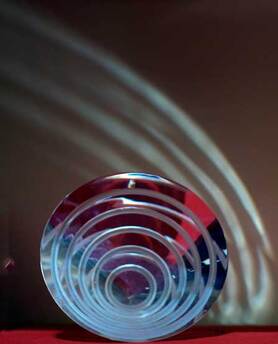 Image 2 - courtesy of Barry Ressler Image 2 - courtesy of Barry Ressler This is seen in Image 2, in which the red at the top of the quartz appears because of this mirror effect, reflecting the red from the base off the top of the quartz, while also refracting or bending the light to create the curved shape that can be seen. And Image 3 is such a thing of beauty, where you can almost pick out all of the colours of the visible spectrum of light, which have been memorised in the correct order by school children of many generations, using the well-known mnemonic – ROYGBIV – for example, richard-of-york-gave-battle-in-vain, signifying the colours in order: red, orange, yellow, green, blue, indigo, violet. Barry Ressler confessed though that the images happened completely by chance, as he placed the prism and quartz spacer inadvertently on top of the data DVD. 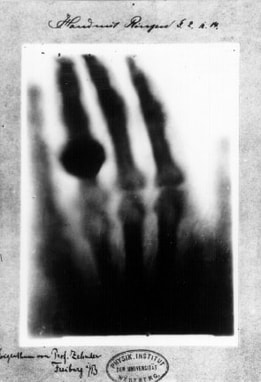 The first medical x-ray, the hand of Roenrgen's wife Anna Bertha Ludwig, The first medical x-ray, the hand of Roenrgen's wife Anna Bertha Ludwig, A fortunate case of serendipity that led to some stunning photos, and a not uncommon happening in the world of invention and discovery, whereby a little ‘luck’ or an ‘accident’ has led to an addition to the scientific knowledge. Just imagine if Dr Wilhelm Roentgen, Professor of Physics in Wurzburg, Bavaria, had not ‘accidently’ discovered X-rays while testing whether cathode rays could pass through glass! The first X-ray image ever was of his wife's hand, complete with ring, and his invention led him to become the first ever winner of the Nobel Prize in Physics in 1901. The three prism and light images used in this blog, with the kind permission of Barry Ressler, first appeared and remain to this day on the American Physical Society Site - Physics Central, where the photos have met with a good deal of interest.
Welcome to Part 2 of the blog by Dr Stijn Thoolen, an ESA-sponsored medical doctor spending 12 months at Concordia research station in Antarctica. He facilitates a number of experiments on the effects of isolation, light deprivation, and extreme temperatures on the human body and mind.
Dr Stijn ThoolenMedical Research Doctor, Concordia Research Station, Antarctica November 8, 2019, somewhere above Asia I started early today, at 05:00 AM. Despite my sleep deprivation from a too long Nintendo farewell, I now jumped out of my friend’s bed without struggles. I give him, still half asleep, a last hug, and while I walk out of the door that radio in my head spontaneously starts playing again:
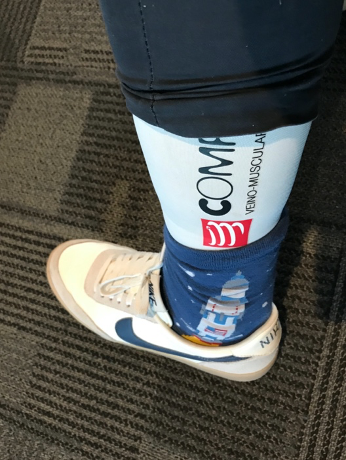 Liftoff! With 6 flights I figured to put on my compression socks… Credit: S. Thoolen Liftoff! With 6 flights I figured to put on my compression socks… Credit: S. Thoolen
Today it the day, finally. There have been few days in the past months where Concordia didn’t cross my mind. Enough thinking, enough talking, weeks of preparation and training, deadline after deadline finished: now it is time to make it happen! From Amsterdam to Paris, Hong Kong, Melbourne, Christchurch, and then off to the Antarctic, via the Italian coastal station Mario Zuccheli to our icy Dome C. It is only six flights and a day or five. What a party, and that fun is only further enhanced by all those happily-surprised faces of airport staff to whom I have to show my travel plans today (“Oh wow! Best of luck!”).
Today I am focused, bouncing from airport to airport full of curiosity, but the past few days were quite different. I have been ready for Concordia since the end of my training period early October, but over the past month more and more moments of realization squeezed through the goals and automatic pilot of my preparations, that I will really be away, for a full year, from about everything I see around me. Not that it bothered me much at first. It was quite funny actually (hah, Dutch gray rainy day, shall I miss you too?). But with my departure getting closer and the goodbyes less and less trivial, I was now getting overwhelmed with a feeling of uncertainty, a bit of fear perhaps, that I have not felt in years. So there I stood, sobbing and sniffling in my girlfriend’s arms at JFK airport in New York (you can imagine how awkward it is when at the same time a control-savoring security guard is screaming at you: “Sir, I need you to step out of the line, right now!”) InnovaSpace is pleased to welcome Dr Stijn Thoolen to tell us more about life at the Concordia Research Station in the Antarctic, an extreme environment where temperatures can fall below −80 °C (−112 °F) in the winter months. As an ESA-sponsored medical research doctor, Stijn will remain at the Franco-Italian research station for 13 months - definitely not an activity for the faint hearted! Dr Stijn ThoolenMedical Research Doctor, Concordia Research Station, Antarctica 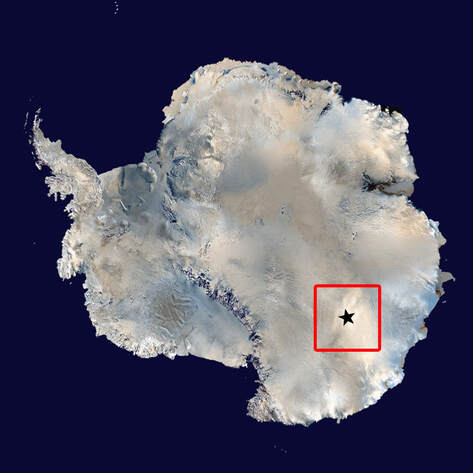 Location of Concordia Research Station. Credits: ESA Location of Concordia Research Station. Credits: ESA 75 ° 05’59 “S; 123 ° 19’56” E. I will spend 13 months of my life at these coordinates from November onwards. Far away from my girlfriend, my family and friends, from everything that I know and have loved for the past 28 years. A small 1700 km away from the South Pole, situated on a 3270-high ice sheet, with 40% less oxygen than at sea level (the atmosphere is thinner at the poles), a humidity lower than in the Sahara, average temperatures of –30°C in summer and –65°C in winter, four months without any ray of sunshine (is this lunchtime, or should I go to bed already?) and without possibility of evacuation for nine months, the Franco-Italian research station Concordia on Dome C in Antarctica sounds more like a base on another planet. Every year the European Space Agency sends a ‘hivernaut’ (a winter version of an astronaut?) to this abandoned outpost at the bottom of our globe to perform biomedical experiments on the crew, in preparation for missions to the Moon, Mars and who knows what’s next. This year it’s my turn, and those 13 months are starting to get awfully close… I hear you ask: why (…would you do that for God’s sake)? “In our history it was some horde of furry little mammals who hid from the dinosaurs, colonized the treetops and later scampered down to domesticate fire, invent writing, construct observatories and launch space vehicles” – Carl Sagan 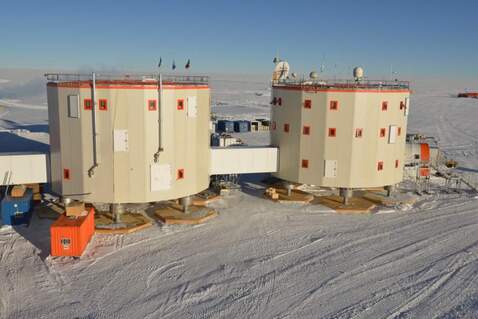 ‘White Mars’, ‘planet Concordia’, you name it. Credits: ESA ‘White Mars’, ‘planet Concordia’, you name it. Credits: ESA I sometimes ask myself that question as well, but you can imagine that the answer is as obvious as the undertaking itself. Maybe we should start with a short self-evaluation: Self-evaluation is not something we often do. At least, I was never good at it. When everything goes according to plan, and everyone around you screams how wonderful it is that “little Stijn wants to become a surgeon!”, you aren’t really encouraged to take a critical look at yourself, right? But sometimes a shock (or two) helps to adjust a bit. A lesson in humility perhaps. For me, that first shock came about five years ago. I had said “yes” a little too much, a good friend died, my parents divorced, and with about ten suitcases of mental luggage I left for a research internship in Boston, USA, during my medical studies. In such a new environment, full with material to reflect on, things became a little more relative. I realised that nothing is as obvious as it seems, that some things might actually be bigger than us (the Universe, God, the flying spaghetti monster, you choose), and, even better, how beautiful and special it is that we are able to witness all that (I know this sounds dull, but I dare you to try with your eyes fixed on a bright, starry sky). |
Welcometo the InnovaSpace Knowledge Station Categories
All
|
UK Office: 88 Tideslea Path, London, SE280LZ
Privacy Policy I Terms & Conditions
© 2021 InnovaSpace, All Rights Reserved
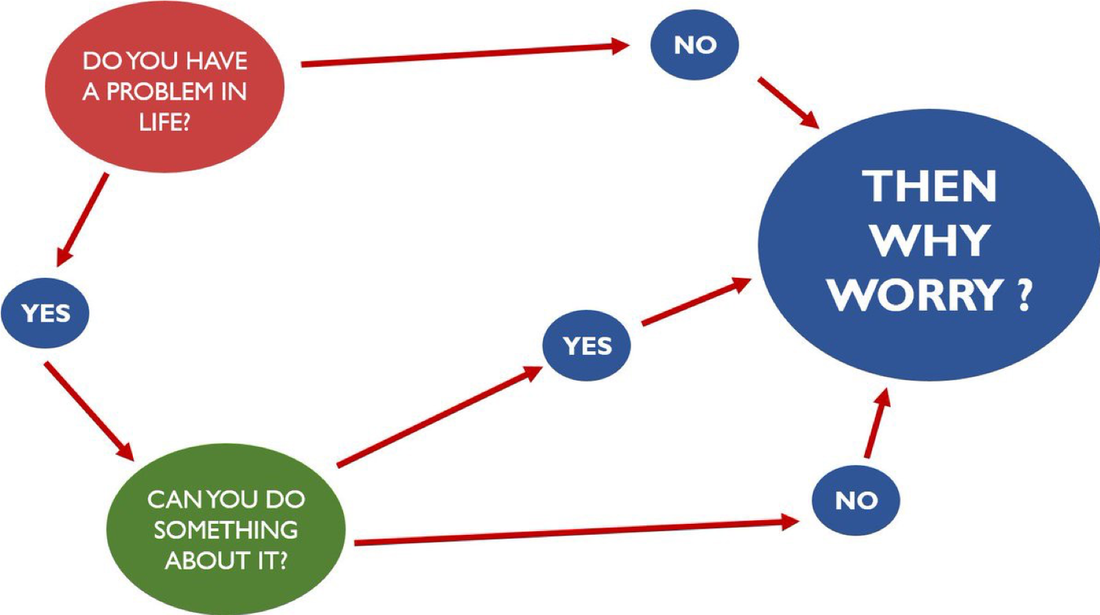
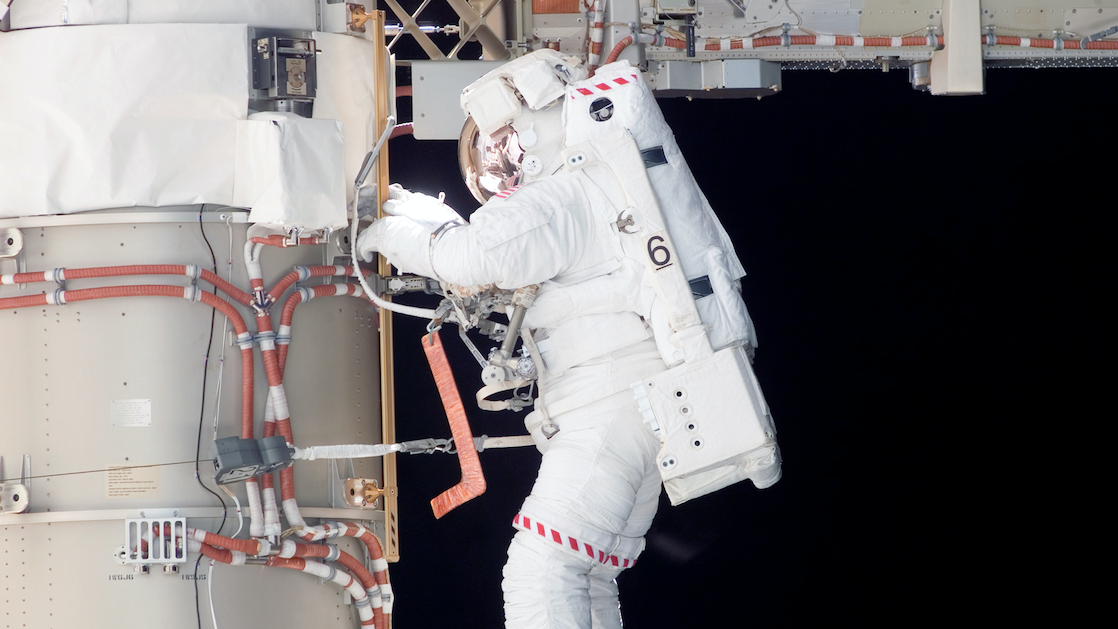
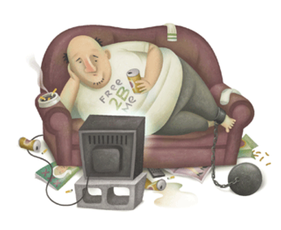
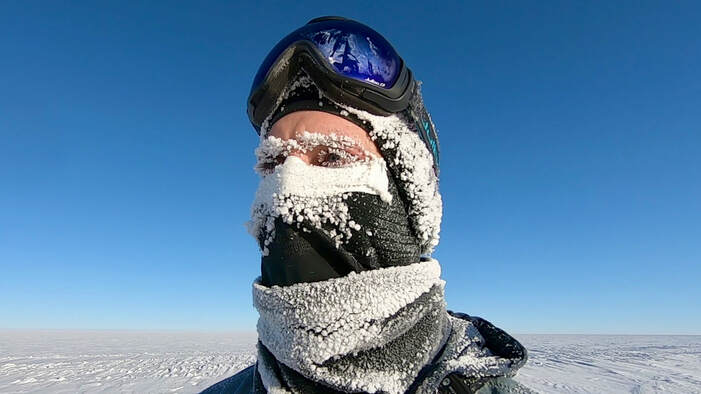
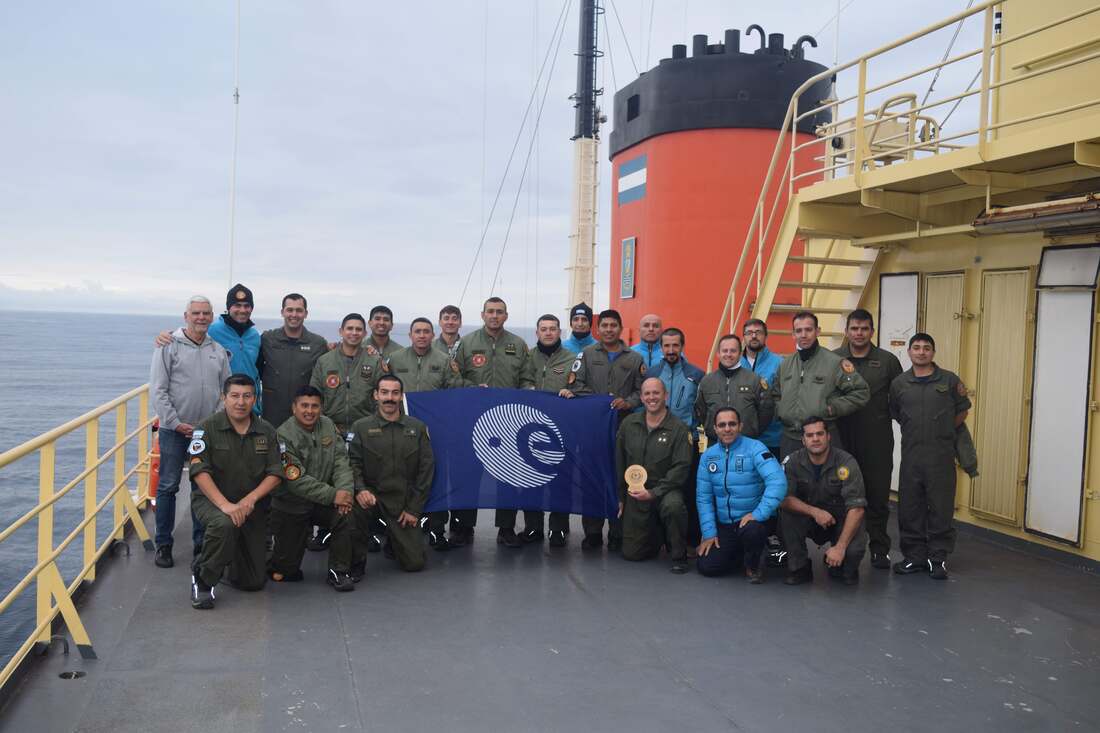


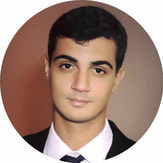
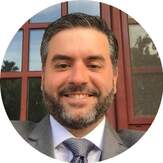
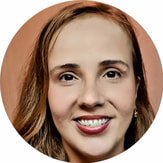
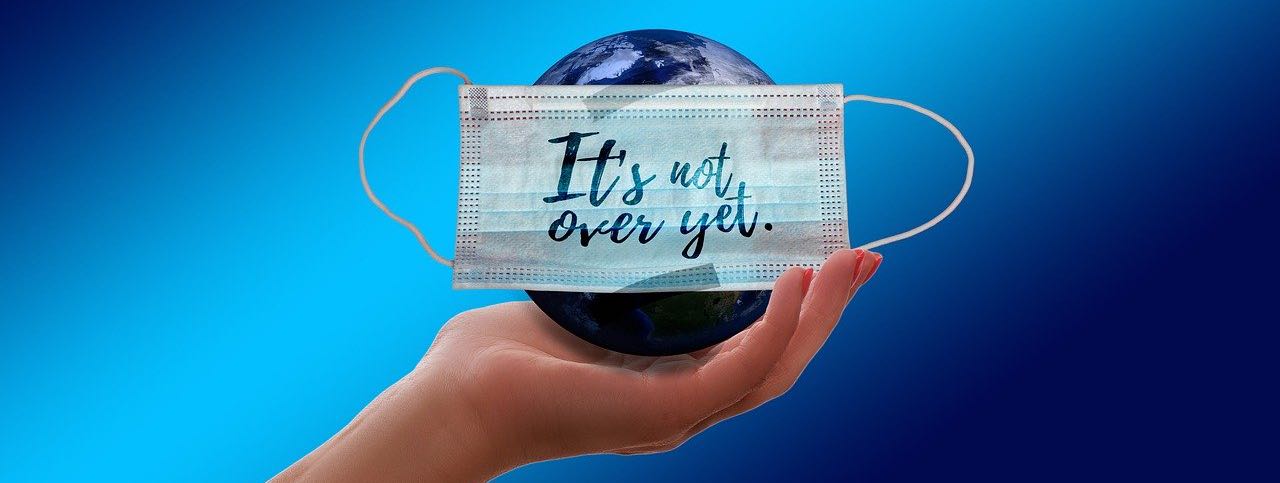

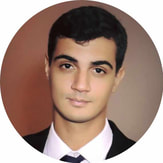
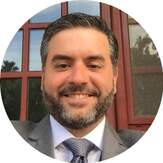
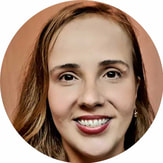
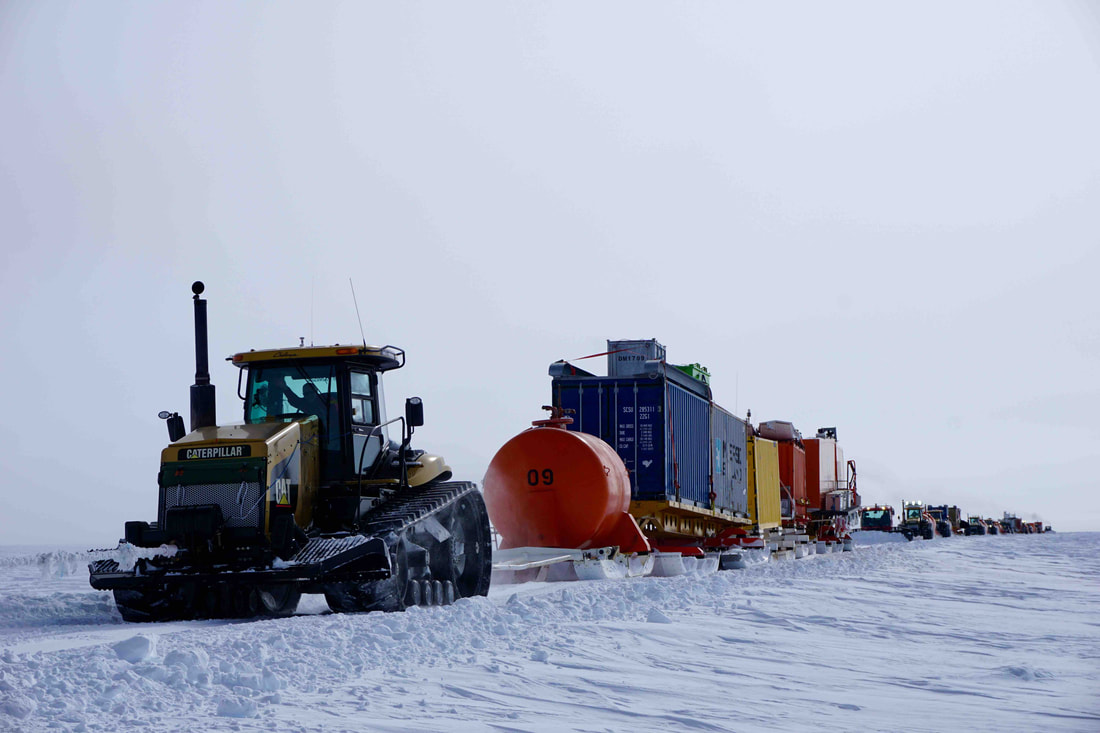

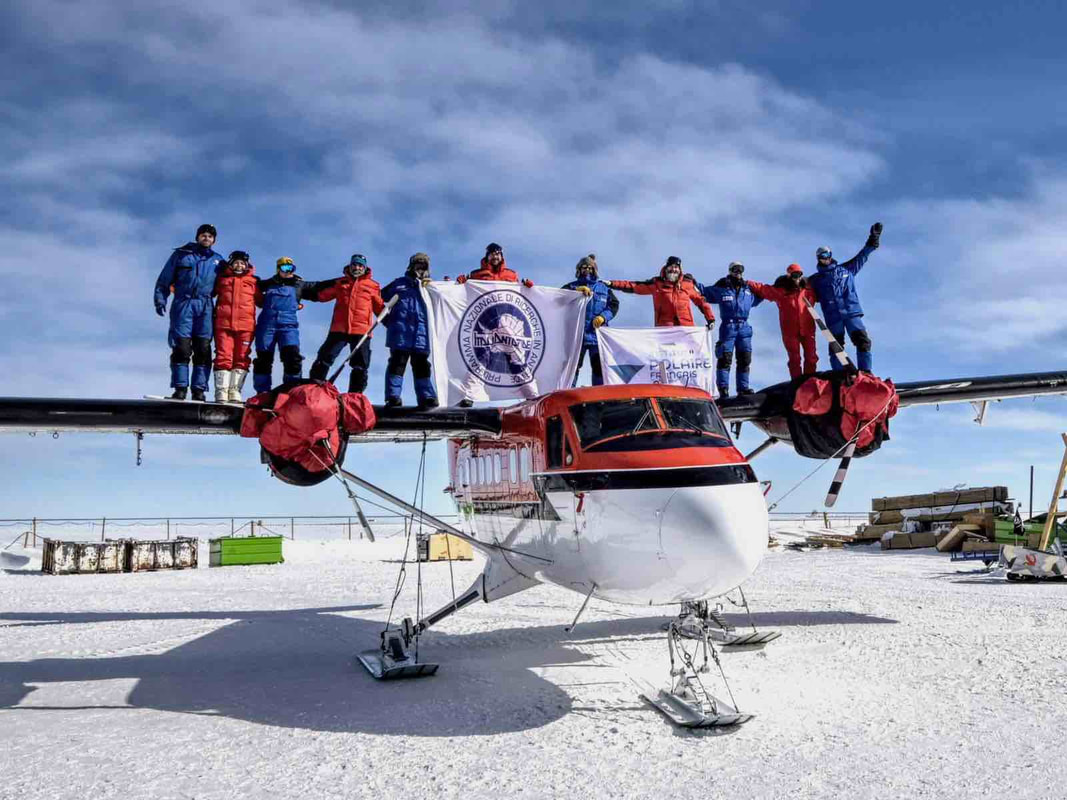
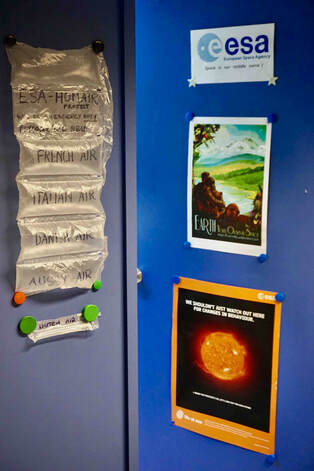
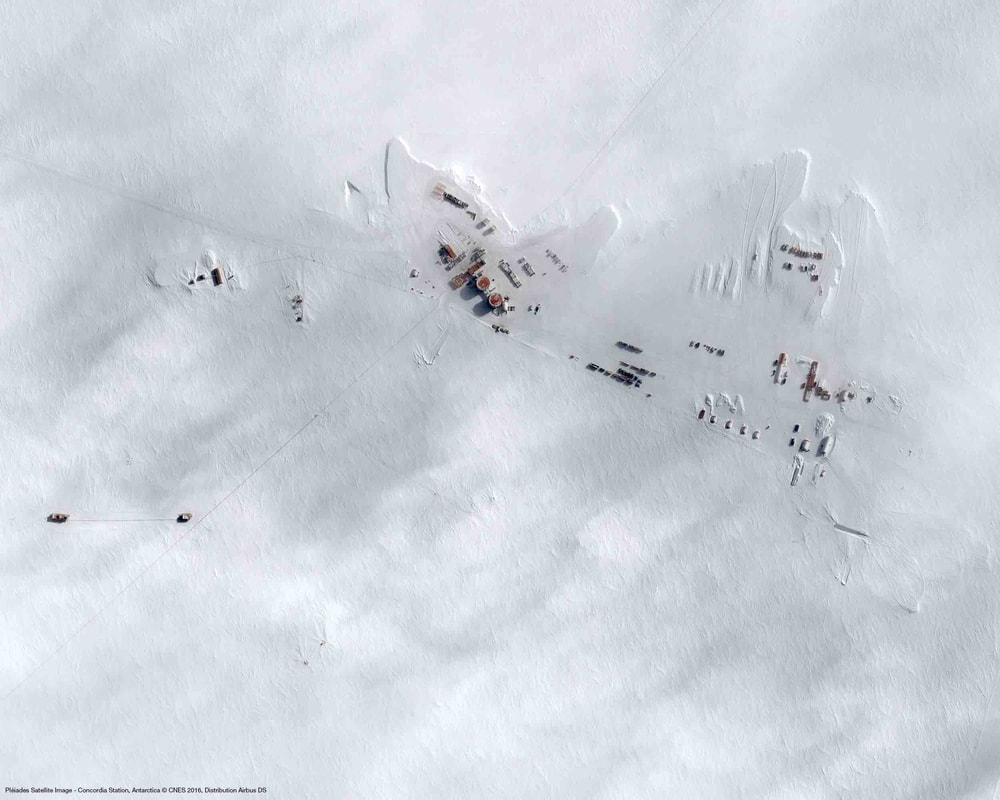
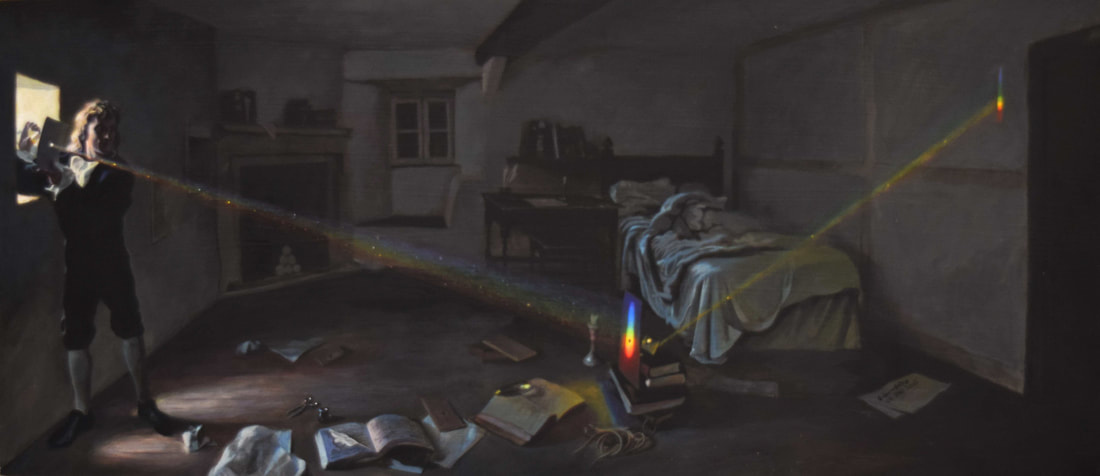
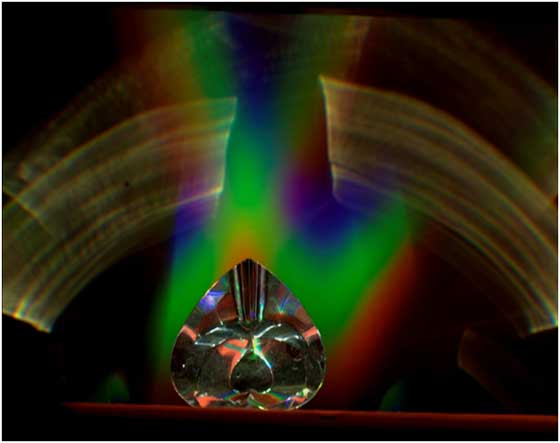
 RSS Feed
RSS Feed